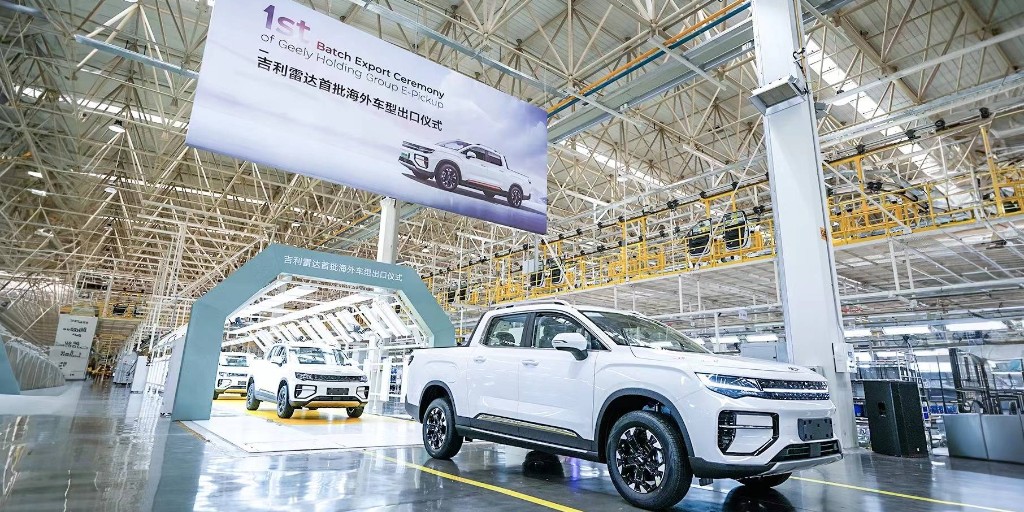As the world races towards a greener future, the automotive industry is witnessing a surge in electric vehicle (EV) innovations. Joining the ranks of established players like Tesla and Ford is China’s very own Zhejiang Geely Holding Group (Geely Group), which recently made a splash in the international market with its all-new electric pickup truck—the Radar GD6. Despite being a newcomer to the global EV scene, Geely’s foray into electric trucks is already making waves.
The Radar G6 has a range of up to 632 kilometres, which is impressive for its class
Geely Group proudly announced the shipment of the first export batch of its electric pickup trucks from the Zibo Smart Factory, signaling the beginning of a new era for the company. The Radar GD6 is a product of Geely’s commitment to innovation and sustainability, marking the debut of its new brand, Radar Auto, aptly dubbed “China‘s first pure electric outdoor lifestyle brand.”

The Radar GD6 sets itself apart with an impressive array of features, including multiple battery pack options to suit varying needs: 63 kW, 86 kW, and 100 kW. These options offer an extensive range of up to 632 kilometers (392 miles), ensuring drivers can embark on long journeys with peace of mind. With a powerful 200 kW (268 hp) electric motor under the hood, the GD6 boasts an impressive 284 Nm of torque, promising a smooth and thrilling driving experience.
Moreover, the Radar GD6 isn’t just a pickup truck; it’s a versatile power source. Geely has integrated the truck with the capability to connect to a home or power other devices. This forward-thinking feature aligns with the growing demand for electric vehicles that offer practical solutions for off-grid adventures and emergency power supply. While pickup trucks are immensely popular in the United States, their appeal in other parts of the world has been limited—until now. The advent of electric trucks from major automakers has started to shift perceptions worldwide, and Geely’s entry into the segment is likely to further accelerate the transition towards sustainable mobility.
RELATED:
- The Unveiling of the Polestar 5: A Flagship Electric Sports Sedan Co-Developed by Geely and Volvo
- Hybrid Vehicle Industry Gets a Boost: Geely and Renault Invest $7.7 Billion, Employ 19,000
- Best Lenovo Ideapad Slim 3 alternatives in 2023
(Via)







